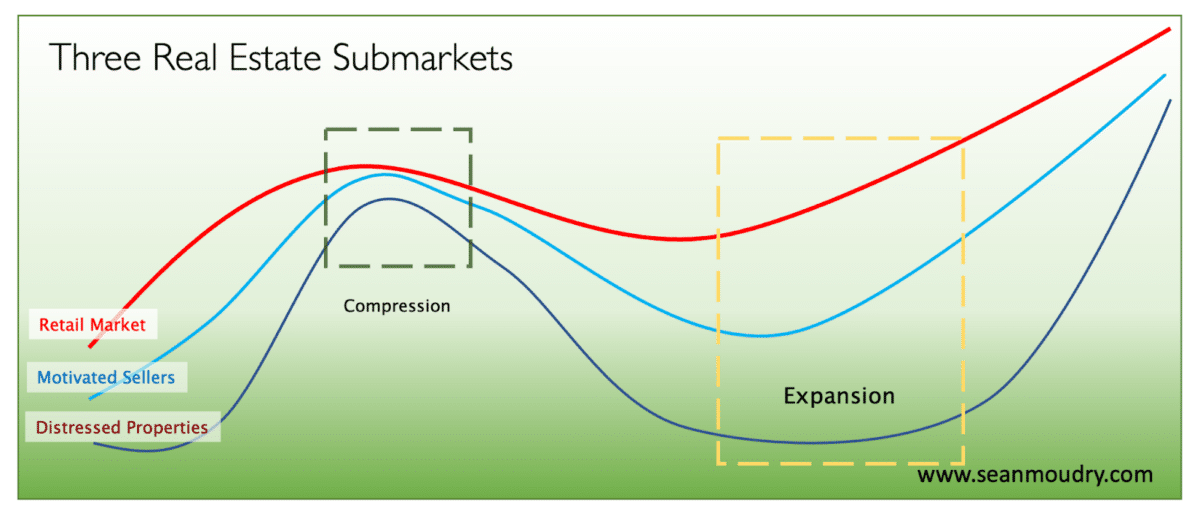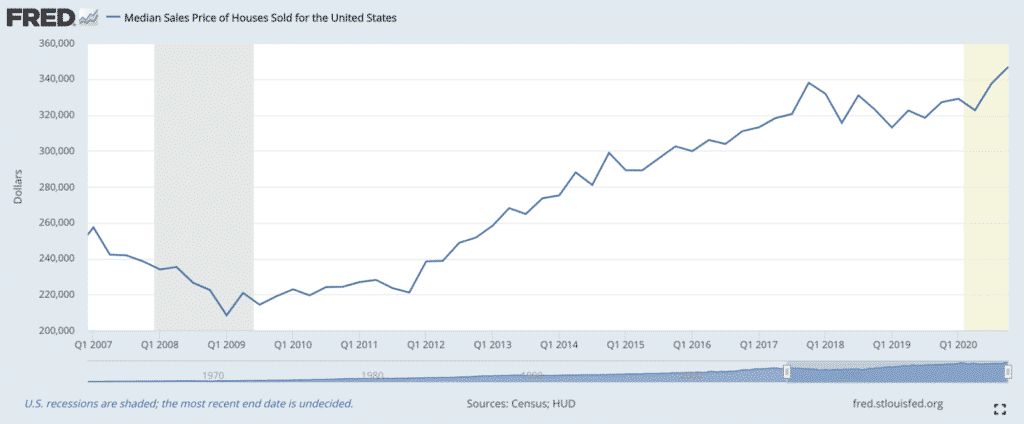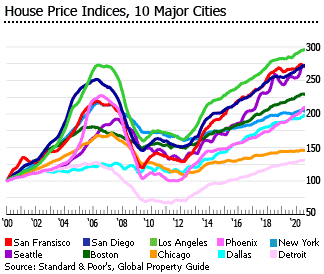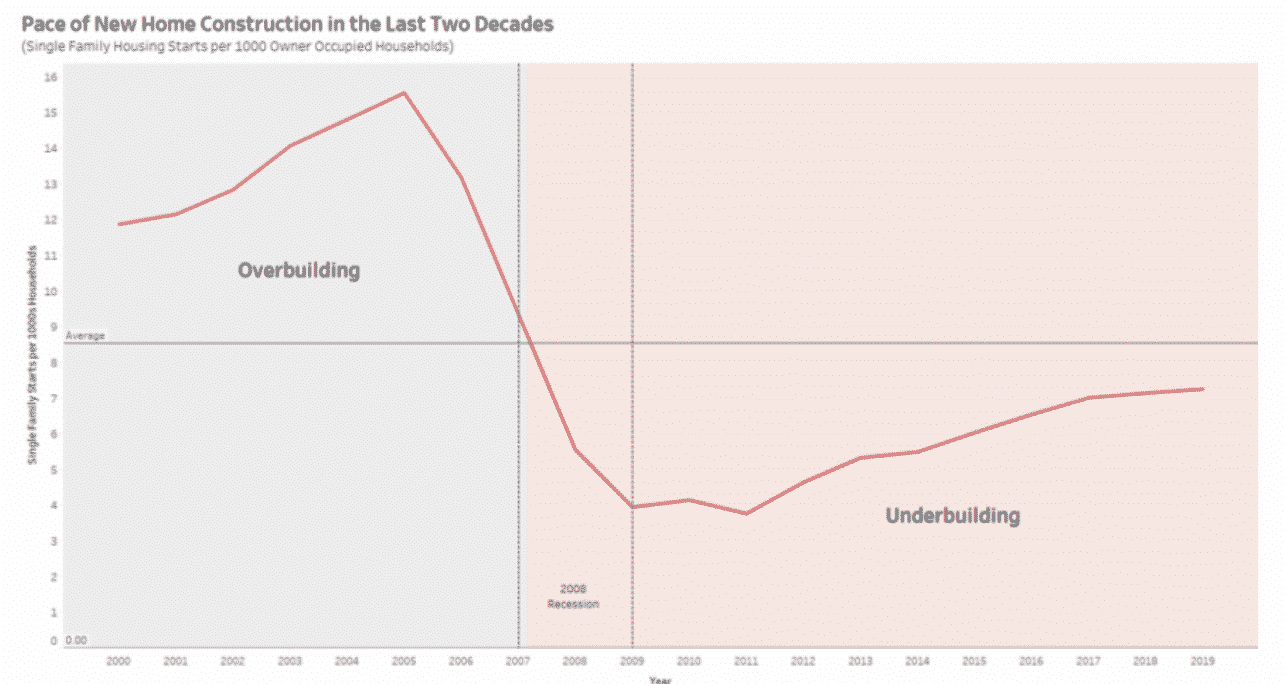Right now might seem like a frightening time to jump into real estate investing. But for value-seeking investors like myself, the scariest time to invest is actually in a good economy, when housing prices are rising at a blistering pace. This is because it is difficult to identify the top of a market, and nobody wants to buy at the top of the market just to watch the value of their investments fall during a downturn.
An economic downturn provides many opportunities that are nearly impossible for the average investor to take advantage of in a good economy. Despite this, many agents have a hard time persuading would-be investors that a downturn is the right time to jump into the real estate market and start investing.
To help you educate your clients, I’m going to share my most persuasive reasons why your client should start investing in real estate right now. But first, let’s get a handle on the basics.
Is Right Now Really a Good Time to Invest in Real Estate?
It’s a fair question! I’ll get into the specific reasons below, but let’s take a minute to orient ourselves.
A Look at the Current Market in 2023
The market is anything other than typical right now. According to the National Association of Realtors’ latest existing-home sales data, sales are down 23.2% and prices are down 1.7% from this time last year. The association’s chief economist characterized it as “bouncing back and forth,” with interest rates, low inventory, and job gains contributing to “an environment of push-pull housing demand.”
Inventory is low and prices are high, but that situation is not going to remain true forever. Kate Evans recently did a deep dive into why the market is so hard for first-time buyers to get into, but she also noted that there are positive signs around inventory and interest rates.
Benefits of Investing in Real Estate Right Now
Again, we’ll dig into this in more detail below, but certain submarkets offer more value than others, which is why I see right now as a good time to invest in real estate.
But also, for certain investors, I do think time is of the essence. I worry in particular about younger buyers and investors who might miss out on one of the last opportunities in their lifetimes where they will be able to buy undervalued real estate before the market becomes unaffordable again. So I hope I can help you and your clients understand how to leverage today’s investment landscape so you can pounce on more opportunities as they arise.
OK, now let’s dig into the reasons I see right now as a good time to invest in real estate.
Reason #1: Recessions Create More Opportunities to Invest

I know what you’re thinking; “There isn’t enough inventory and house prices are too high. How am I going to find properties for investors to buy?” Well, the good news is that inventory is going to increase.
Many people, even real estate agents, don’t realize that there are actually three real estate submarkets happening in the residential space at the same time. These submarkets occur simultaneously in every market, everywhere and all the time … without exception!
Retail Market
I’m not talking about your local corner store here. This retail market is reflective of a sale between a seller who is not in financial or personal distress and a buyer who is not being influenced to buy due to their circumstances. It’s the typical real estate transaction—what agents refer to as “market value.”
Due to the massively low housing inventory that isn’t likely to change in the near future, housing prices in the retail market are not expected to substantially change, up or down, even if we see a full recession. This is because most homeowners have a low interest rate and an affordable payment, and most homebuyers don’t have a lot of economic or social pressures to buy. Therefore, we’re most likely to see price movement in the other two submarkets.
Motivated Sellers
The motivated seller category is the submarket where you will find homeowners who are facing financial distresses like bankruptcy, foreclosure, and job loss or relocation. They may also be facing a personally distressing situation such as divorce, health issues, or even a death in the family.
Motivated sellers don’t have the luxury of time, like the sellers in the retail market do. Their unique situation requires them to resolve their circumstances within a defined time frame. Some as little as a few days!
While these situations also occur in a strong economy, the circumstances of super-low inventory and high buyer demand mean that sales involving motivated sellers transact at nearly the same price as a retail sale. This is because the entire market is in a phase that we call compression.
However, during a slower market, the opposite occurs: The price gap between the retail and motivated seller submarkets increases since the motivated sellers will have to price the property aggressively to attract more offers. They will also lean toward accepting a lower-priced offer with fewer contingencies (think cash and as-is) because they must resolve their situation quickly. This causes the market price gap to further increase, what’s known as a market expansion.
Distressed Properties
The distressed property submarket refers to homes that cannot be sold to a traditional buyer. This is commonly due to the condition of the property or potential title and legal issues.
Distressed properties include homes that have been neglected for years, have fire or flood damage, and bank-owned homes with no plumbing (because the copper was stolen). Like the motivated seller market, prices in the distressed property market decrease more rapidly during a receding economy.
This is because not only are there more neglected properties during recessions, it is nearly impossible to get traditional financing for this type of property when the real estate market is receding. During the Great Recession we saw the distressed home submarket drop as much as 50% in just a few years.
The challenge for most real estate agents is that many motivated seller and distressed property opportunities never make it to the MLS. This is because there’s an entire industry that buys and sells these homes off-market. The key for an agent to be successful in this category is understanding how to find motivated sellers and distressed properties.
I encourage you to check out my article on finding hidden inventory here, but also, there are some automated tools that can help. For example, Chris Linsell recommends autodialer REDX as a ready-to-use platform for agents with easy-to-navigate tools and only the slightest learning curve.
Reason #2: Economic Factors Will Shift Markets
As we have emerged from the pandemic and now face a slowing economy, some market sectors will remain strong and others are beginning to decline.
Real Estate Hot Spots
Despite the uncertain economy, the real estate industry across the country has remained robust. This is mainly because regional economic impacts have motivated some Americans to move for work or due to the high cost of living in their current area. Others are moving for what I’d call “political reasons.”
We are already seeing the impacts of this. Large expensive cities like San Francisco are continuing to lose population to more affordable areas like Sacramento, California. Cities in Florida are seeing an increase in migration from states with opposing political views. And people are moving away from Florida for the same reason.
During recessionary times, look to invest in areas where the population is growing. Increased population will support rental rates and thus property values. These hot spots will likely outperform other areas in both cash flow and appreciation.
Secondary Home Market
Wealthy homeowners who had previously picked up a second home or vacation rental to escape crowded metropolitan areas during the pandemic are now reconsidering the need to own multiple homes. This fact, combined with a 52% drop in mortgage rate locks for vacation rentals (as reported by Redfin) simultaneously may place price pressure on secondary home markets.
Simply put: During economic slowdowns, second homes and vacations are a luxury that most people will cut back on. These cutbacks will trickle down to the real estate market as vacation rental investors struggle to keep properties occupied and profitable.
While at first look this may not sound like a positive reason to jump into real estate investing, it does set the stage for some good opportunities for investors who wish to invest in vacation areas in the near future.
Overall, the migration out of expensive cities will begin to increase inventory, making these types of property more affordable. And competing vacation property sellers will continue to lower their prices, making the previously unaffordable cities and vacation spots accessible to deal-seeking investors like myself.
If you have some patience, you can also look for foreclosures from overleveraged Airbnb investors. Since most second home buyers won’t bother with the hassle of buying a foreclosure, you might find yourself with property you can fix and flip. To learn the ropes of fixing and flipping properties, check out Kiavi’s deep-deep Ebook below.
Reason #3: Don’t Wait for the Bottom of the Market

Many people feel that investing in a falling or soon-to-be-falling real estate market is a mistake. But if you take into consideration the bigger picture, now may be the best opportunity for your clients to invest.
Timing the Market Rarely Works
I have been selling and investing in real estate for more than 29 years, and I still can’t predict the market. Back in 2018 many, including myself, predicted that the real estate market was reaching a peak and that it was going to turn any day … and it did.
For a few months, at least. Then it turned and continued to rise for the next three years! If I can’t time the market, neither can you. But this is more than just being lucky or able to predict the future. Even if you could know exactly what was going to happen, you likely can’t act upon it. Here’s why:
Fewer Financing Options

Buying at the bottom of a recession isn’t always easy or even possible. Consider the 2008 recession. If your client was to buy at the top of the market in 2007, when the average home was $257,000, they would have lost 19% of their home’s value by 2009.
However, if they held on to the property until 2020 instead of selling, the same property would have seen a 134% increase. Of course, if your client could have timed the market perfectly and bought at the bottom of the market in 2009, and then held the property through 2020, they would have gained an additional 19%.
However, the reality is that likely wouldn’t have happened because loan qualification requirements changed drastically from 2007 to 2009. Banks required higher down payments and put restrictions on the number of investment mortgages a client could have. They also excluded rental income as a way to offset debt-to-income ratios.
Therefore, it is very possible that your client may not have even qualified to buy an investment property between 2008 and 2014 (when many restrictions were finally loosened).
If your investor waited to buy at the bottom, in 2009, and couldn’t, they would have missed out on more than five years of appreciation. That is why you should always teach your clients that the best time to invest in real estate is now, since the opportunity may not be available to them in the future.
Reason #4: Real Estate Is a Hedge Against Inflation

Inflation is the result of the devaluation of the dollar in comparison to the goods and services we buy. Generally, the more money that’s injected into markets, the higher the price of goods and services. The CARES Act and Coronavirus Response and Consolidated Appropriations Act injected more than $4 trillion into the U.S. economy, causing the devaluation of the dollar and an increase in inflation.
Since the dollar is worth less and assets are worth more, many savvy investors know to reduce their cash savings by buying real estate assets as a hedge against inflation. Rental real estate is an ideal asset that will not only protect against the lost value of the dollar, but will also provide income during slow economic times.
As inflation rises, so do property values, and so does the amount a landlord can charge for rent. This allows the landlord to earn a higher rental income over time, keeping in pace with the rise in inflation. For this reason, real estate income is one of the best ways to hedge an investment portfolio against inflation.
The Best Hard Money Lenders of 2024 (Interest Rates, Fees & More)
Reason #5: Housing Supply & Demand

Housing demand happens when the population of a specific area grows from both natural increase (the net of births less deaths) and migration into a given area. Housing supply is the existing safe and functional housing in the area. Supply can only be increased by adding new housing or lowering the demand for homes (making previously occupied existing homes available).
When demand from both buyers and renters outpaces supply (or current available inventory, in real estate lingo), home prices and rents will rise. Let’s see how demand and supply are projected to behave.
Demand: U.S. Population Growth Will Continue
One of the main causes of an appreciating housing market is a growing population. When an area gains population, rents increase, and home prices will soon follow. Conversely, when the same area’s population decreases and there are more homes than people to fill them, then the home values will fall, like what’s currently happening in Italy.

According to the Census Bureau, immigration is due to surpass natural population increase by 2030. And by 2060, the U.S. is slated to reach a population of 400 million, putting enormous pressure on demand for housing. Unlike in Italy, U.S. housing prices are expected to rise steeply for the foreseeable future.
New Construction Supply Cannot Keep Up
The simple, logical solution to solving the supply issue is to build more affordable homes. If only it were that simple. Gone are the days of buying land and building a few low-cost homes in just a couple of months.
Fewer Homebuilders Today
Nearly 50% of homebuilders did not return after the recession in 2008. Since then, new construction has continued to trail behind demand.
Homebuilders are hesitant to invest in new developments during insecure economic times. Shifting real estate markets can leave builders at risk of losing millions of dollars if the market declines greatly before their projects are completed.

A confluence of other economic factors are expanding the gap between new construction and housing demand. These include slow planning and infrastructure processes, rising home construction materials and labor cost, and the declining profitability of building homes to meet the needs of the average family. These factors are expected to continue to put upward pressures on new-home prices for decades to come.
I worry that many investors, especially younger ones, may miss out on the opportunity of a lifetime. For buyers under 40, this may be one of the last opportunities in their lifetimes that they will be able to buy undervalued real estate before the market becomes unaffordable again.
Bottom Line
Of course, no one can see the future. But I believe that house values will likely remain strong and rents will continue to rise, despite an economic downturn. On the other hand, I also think we will see inventory increase due to some homeowners being forced to sell for personal and financial reasons. This will create a few great opportunities.
If there’s one lesson for agents and brokers to take away from all of this, it’s this: The good deals will be absorbed quickly, and the U.S. will return to a highly competitive housing market.
Now is a great time to sharpen your skills and prepare yourself and your clients for the investment market ahead. The shifting economy will surely create opportunities for you and your clients to purchase underpriced real estate and invest in new markets. My hope is that the points I’ve outlined here helped you (and your clients) see why now is a good time to invest in real estate.







